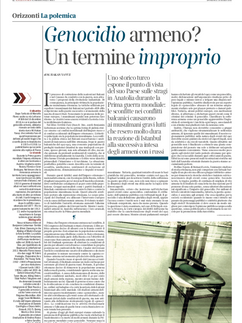



Perhaps you became so small, Armenia, that we could carry you in our hearts.
(...) Perhaps your handful of soil was meant as talisman, lesson, and exercise.
Your name became the symbol, perhaps, for purification in a world of lies.
Sylvia Gaboudikian (1919-2006)
The historical Armenian plateau covered a land going from the Caucasus to the Black and Mediterranean seas.
Nonetheless, today's Republic of Armenia only covers one-tenth of it. It is a tiny mountainous country hidden in the Caucasus, mainly known to the world for the echoes of what can still be considered the Twentieth Century's most unacknowledged genocide - a wound still open in the heart of its people.
The“Land of Haik”, nephew of Noah, was settled at the feet of Mount Ararat, a majestic active volcano that is the sacred mountain of the Armenians and is now inside the Turkish borders. Enclosed by mountains, with no access to the sea, this primary cradle of a highly mystical Christianity (already state religion in 301 AD) has been aUSSR province till 1991 and, maybe also because of this, is generally perceived as deeply isolated. Nonetheless, this supposed isolation never made Armenia an island. On the opposite, since its land has always been a crossway between Europe and Asia, whose influences are both constantly perceivable through its landscapes and culture, it is not clear if and how its isolation is or not a misperception of reality.
Armenia looks like a borderland in itself, a strip of land that oozes history. Here the most ancient and diversified traditions are cradled together with a growing urge for futuristic modernities. This society, where transition longly ago became a perpetual state of being, looks more like an open border line to cross and to be crossed by than an isolated strip of land. The stillness of its country villages and dry mountainous landscapes, longly casted away from the center and surrounded with ruins of abandoned soviet factories, is undeniable. But the feeling of “isolation” transmitted by these remote lands disappears when talking to its welcoming people - an estimated population of 2.93 millions, half of which is settled among the capital of Yerevan and its surroundings. Moreover, its alternative, well-educated, and politically active youth shapes a country deeply rooted in its Past, but also in the Present and Future global cultural perspectives. It is a youth quite conscious about the local HR interrogtives involving gender and minority issues, as worried about the growing modernization and gentrification of the capital, Yerevan, one of the oldest cities of the world.
This ongoing reportage aims to deepen the ideas of stillness and isolation associated to today's Republic of Armenia, and the negative pre-judgements we generally associate to them. On the opposite, it also compares this perception to the enthusiastic international reactions generated by the random investments into brand new modernistic buildings, shopping avenues, and trendy bars, that are quickly substituting many pre-medieval areas of the capital Yerevan. Yerevan, a world capital constantly inhabited since 2,800 years, is now undergoing a deep modern face-li� in order to attract international private investors (fact that is surely splashing part of its inhabitants into the pit of gentrification and forced evictions, following Human Rights Watchreports). Here we deepen the layering of the contradictory interpretations and feelings that permeate the same daily reality. From the supposed quietness of the Armenian countryside and and monasteries to the unprecedented spread of mobile and internet infrastructures in the same areas (Freedom House); from the authorities' attitude to interfere with personal freedom to the general will to participate to the globalized economy and culture. This in order to try to visualise the daily cultural collage that this handful of soil's Present and the Future paths are going to shape.
LA LETTURA - Corriere della Sera, Italy.
March 24, 2019.




